Watch the package at 5 p.m. Monday on Denver7 and anytime on the Denver7+ app.
In the snow-covered Colorado mountains, man's best friend can quickly become man's best chance at survival.
Humans have put dogs to work for hundreds of years, but it was only a few decades ago that they were brought in as a unique and crucial tool in avalanche recovery and rescue.
While training the canines for this line of work is objectively adorable to witness — dogs in the snow! — the lessons learned are as serious as the life or death situations the teams face every winter.
And Colorado Rapid Avalanche Deployment, perhaps better known as C-RAD, has been rising to the challenge for decades.
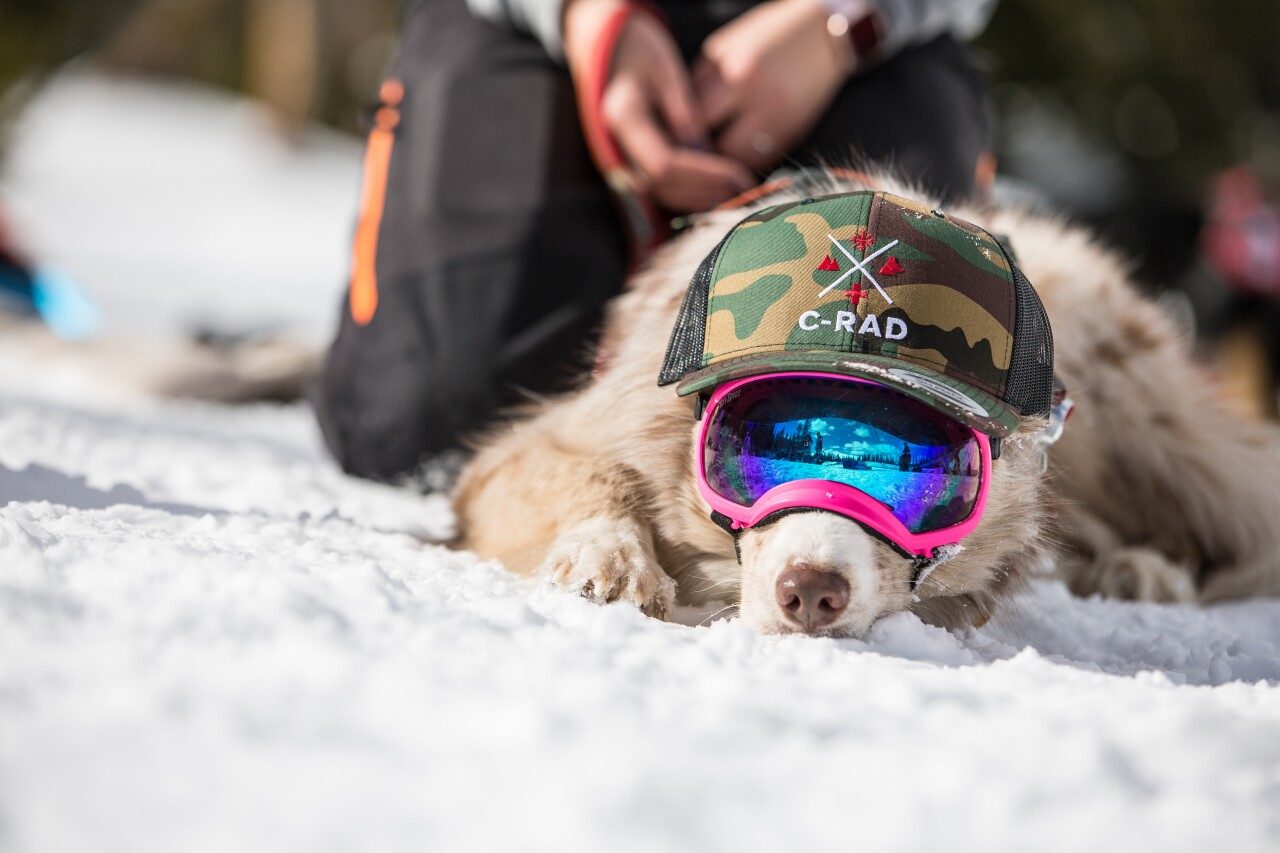
C-RAD members train to prevent tragedy, but a devastating disaster is also exactly how the nonprofit came about.
It was 1987 in Breckenridge. Outside the ski area boundary on Peak 7, an avalanche broke, catching eight people. Four did not have avalanche transceivers and were buried and killed. Search and rescue took three days and hundreds of rescuers.
PHOTO GALLERY: Avalanche dogs, handlers in Colorado train with C-RAD
That kickstarted the demand for stronger and faster response teams, which led to the introduction of critical care transport group Flight for Life in Summit County in the 1990s and then the idea of avalanche dogs, said Doug Lesch, president of C-RAD.
"And then, over the last 30 plus years or so, we've evolved and developed into a formal 501(c)3 nonprofit that focuses on the training, validating and support network for avalanche rescue teams," he said.
LEARN MORE: How to support C-RAD
While C-RAD does not respond to incidents on its own, its roughly 100 members are trained and partner with various other organizations — such as sheriff's offices, ski patrol teams, and search and rescue groups — to help with avalanche rescues and recoveries. The training C-RAD provides keeps those dog-handler teams at the top of their game.
While the organization is based out of Summit County, it now includes members in states around the central Rockies and western U.S.

"It's given an outlet and a support system for some people to get more involved in avalanche search and rescue, especially on the canine side," Lesch said.
That's because dogs offer a tool humans cannot replicate: their noses.
"Their ability to smell is extremely more sophisticated than ours," Lesch said. "You know, we see a birthday cake. We may smell what cake smells like, whereas a dog is able to isolate out all those different ingredients and pieces. Even that example is probably too dumbed down for what the true science behind it is."
When they're on the job, avalanche dogs are non-scent discriminatory, meaning they aren't seeking a specific person. After all, rescuers want to find any kind of human scent coming from under the snow, no matter who it is. The dog must have a "recognizable and repeatable trained final response" like digging or a bark once it recognizes that smell, Lesch said.
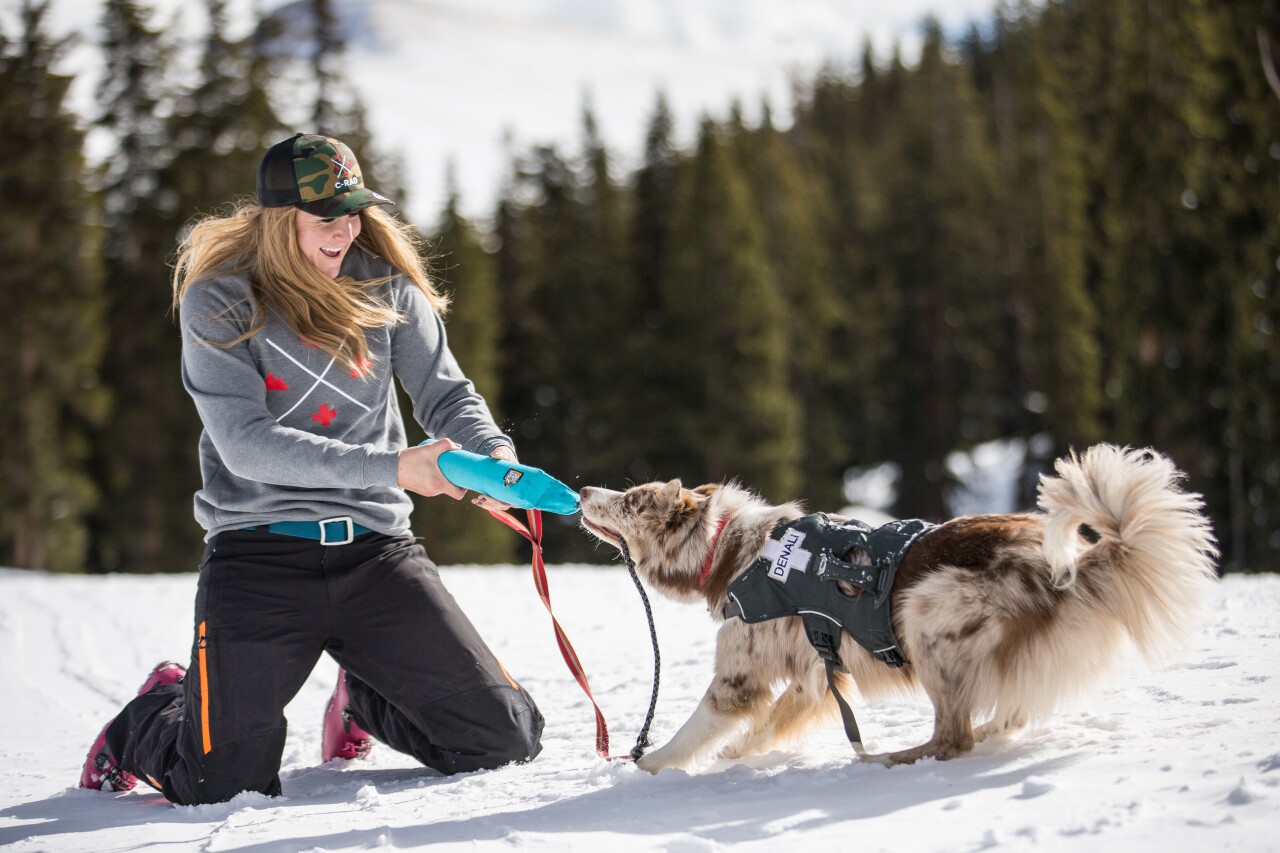
Some dog breeds are more attune to this work than others, Lesch explained, and there's often overlap with hunting dogs or law enforcement canines. Golden retrievers, Labradors, shepherds and cattle breeds all have the drive C-RAD looks for when training avalanche dogs. Specifically, they need the motivation to "hunt" and eagerness to work, even in poor conditions.
"That's a dog's desire and just innate ability and primitive ability to go hunt something down," Lesch said. "And then we also work with their prey drive, and the prey drive is when the hunt is successful. And we kind of build on that by using tug as a reward."
That means during training, when a dog is successful in the "people-finding game," they get to play tug-of-war with a toy, he explained.
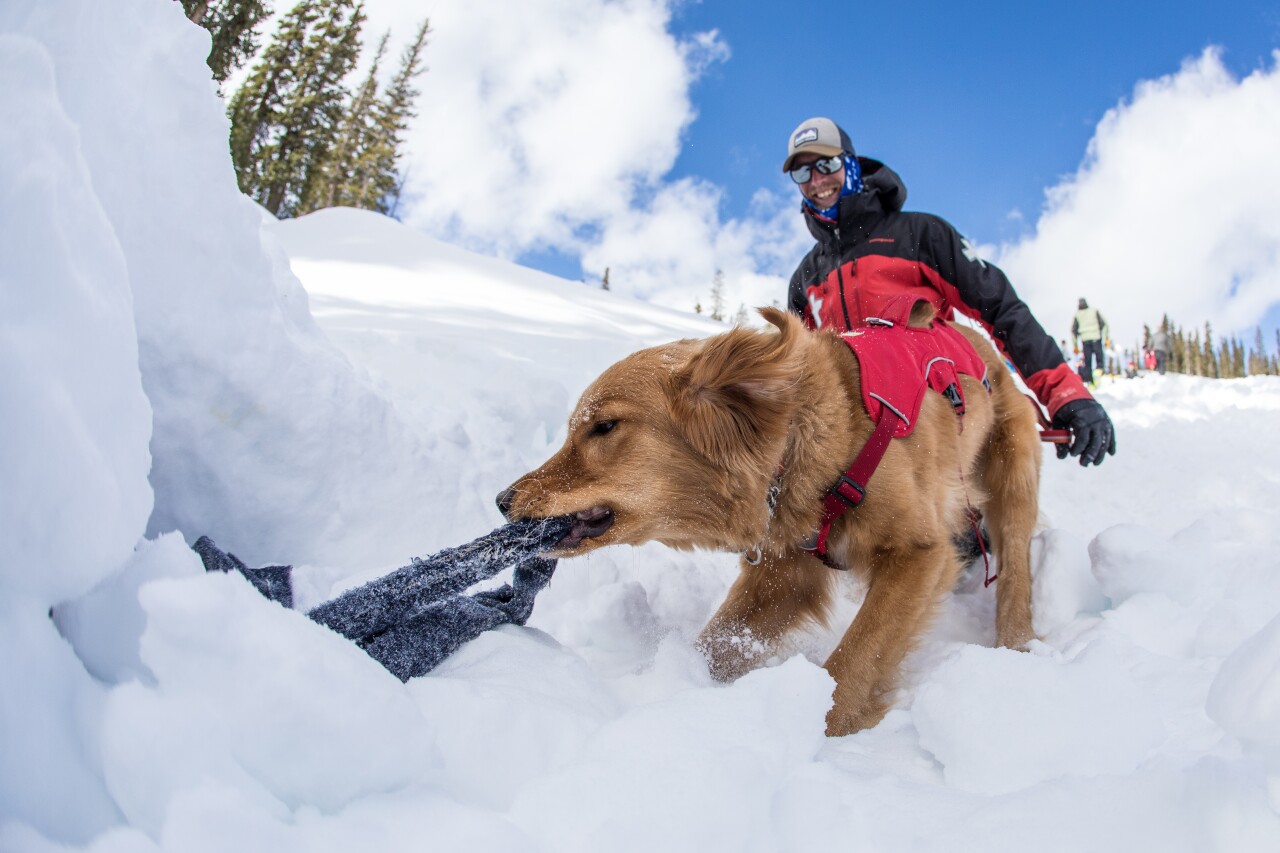
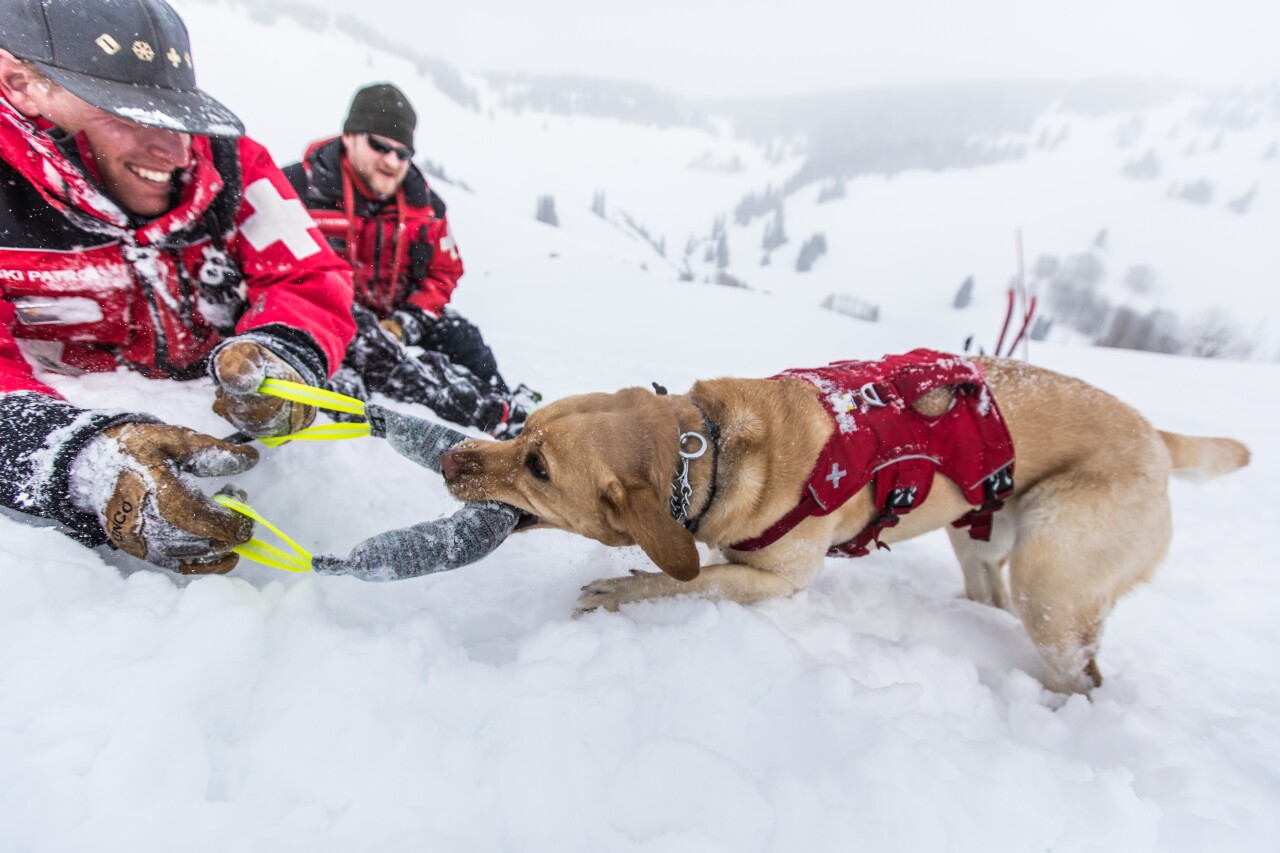
"We want them to have that commitment to that person (in the avalanche), even in the unfortunate circumstance if that person is deceased and can’t play tug with them," he said. "And the concept there for us is we run hundreds and hundreds of drills with positive reinforcement with the... person hiding, being really animated and really excited and playing tug with them (so) that the handful of times, if these teams are needed to go find somebody and those people are deceased, they're not going to override the programming or the memories that the dog has from all those hundreds of fun events."
C-RAD dogs go through intense training on a weekly basis and their handlers — who are also their owners — are always right beside them.
While dogs must have that appetite for hard work, their human counterparts need to come in with their own expertise, Lesch said. That's because C-RAD isn't meant for beginners.
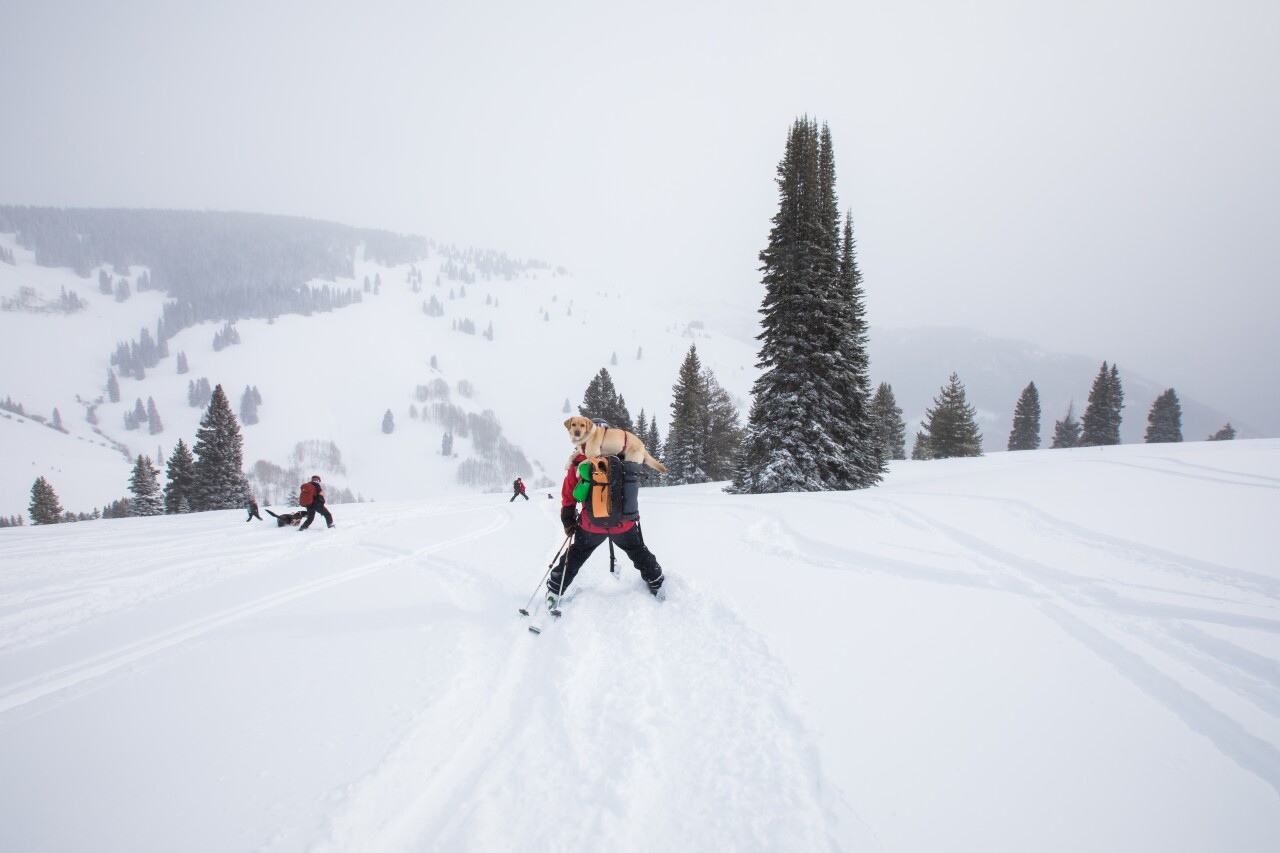
Prospective members should get involved with a volunteer rescue program first, Lesch recommends, and then become proficient in navigation, weather analysis, map-reading, backcountry rescue, first aid, avalanche science and snowpack assessment. They also must feel comfortable with diverse means of travel in the backcountry, like skis, snowboards or snowshoes, in all conditions and elevations.
"We ask people to come with a relationship and involvement and membership with another rescue organization so that this investment and the training they're getting (with C-RAD) can be used somewhere," Lesch said. "So somebody recreationally who wants to just train their dog to be an avalanche rescue dog — while good-intentioned, if they don't have an outlet to use those skills, then that training kind of stops at that point."
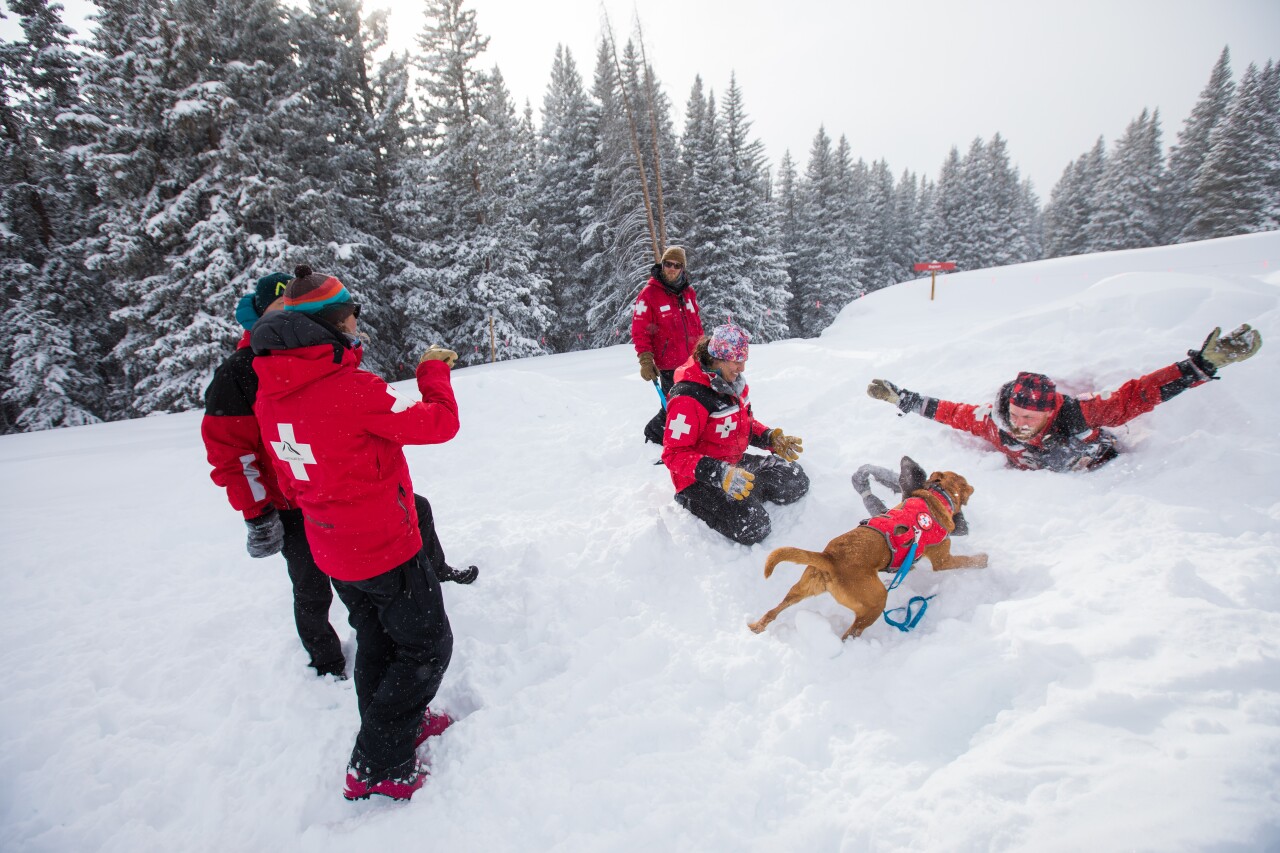
Once trainees are ready to join C-RAD, they can fine-tune their prowess by learning specific and more intense skills, ranging from flying in a helicopter with the dogs to radio channel communications to perfecting the use of an avalanche beacon and probe. Every county has its own communication process and chain of command, so C-RAD members also learn how to integrate themselves into a responding group in the most beneficial way.
"None of this operates in a silo; none of this operates by itself," Lesch said. "And so, to be able to know how to professionally interact and work together with folks is a skill set that's hard to teach. It's hard to put a checklist together. But it's probably one of the biggest pieces that makes a mission successful."
Local trainings have impacts statewide and beyond
After a dog-handler team advances to become a C-RAD member, they can attend trainings and courses to refine their competence in the field. Through that, the dogs, handlers and avalanche technicians can then become a C-RAD validated team.
This year, Winter Park Ski Resort hosted C-RAD's annual winter course from Jan. 30 to Feb. 3. It fluctuated between indoor and outdoor training, as the temperatures in the mornings dipped to 20 below and warmed only into the single digits.
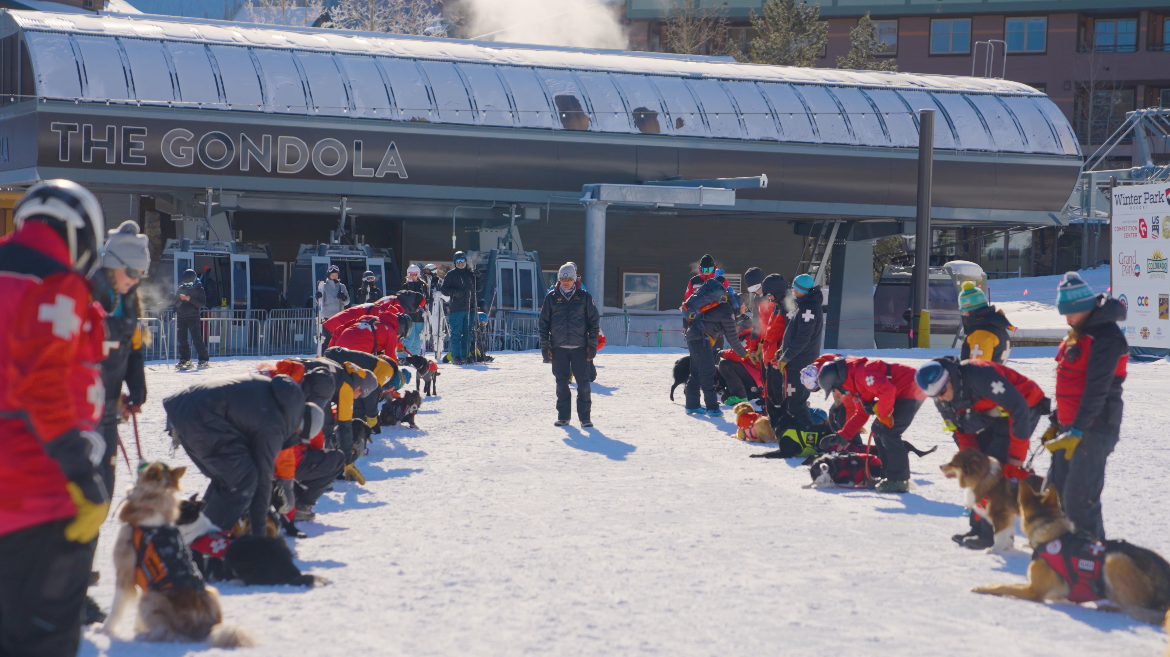
About 30 dog teams and instructors — between 50 and 60 on the biggest day — participated. They represented 18 ski patrols and five search and rescue teams, Lesch said.
The course helped each team strengthen their current abilities while teaching new ones. Aside from rescue and extrication drills with the dogs, participants listened to experts who discussed avalanche triage, cold injuries, and incident management skills. This year, the annual course also included the Responder Alliance program, a mental wellness group that focuses on stress injuries and working through painful, emotional situations during and after a rescue or recovery.
The advanced teams in attendance, typically those who are validated or close to being validated, were able to practice with a realistic post-avalanche scenario.
"It's designed to be a little stressful, you know?" Lesch said. "It's designed to kind of throw some of the realities of challenges in communication, limited resources for what you have. It's not meant to necessarily put people outside of their comfort zones, but give them something to think about."
PHOTO GALLERY: Avalanche dogs, handlers in Colorado train with C-RAD
Rico LaRocca and his 4-year-old border collie Biskit are members of C-RAD and work on the Winter Park Ski Patrol Dog Team (WPSPDT), which is the northernmost team in the state. LaRocca said the resort was fortunate to host the course this year.
"(It was) a huge honor for us, as a young dog team, to host that dog school and be so successful doing so," he said. "After the last couple years we've all had, it sure was a great time to have all those dog teams here, see all those faces we've missed for a while."
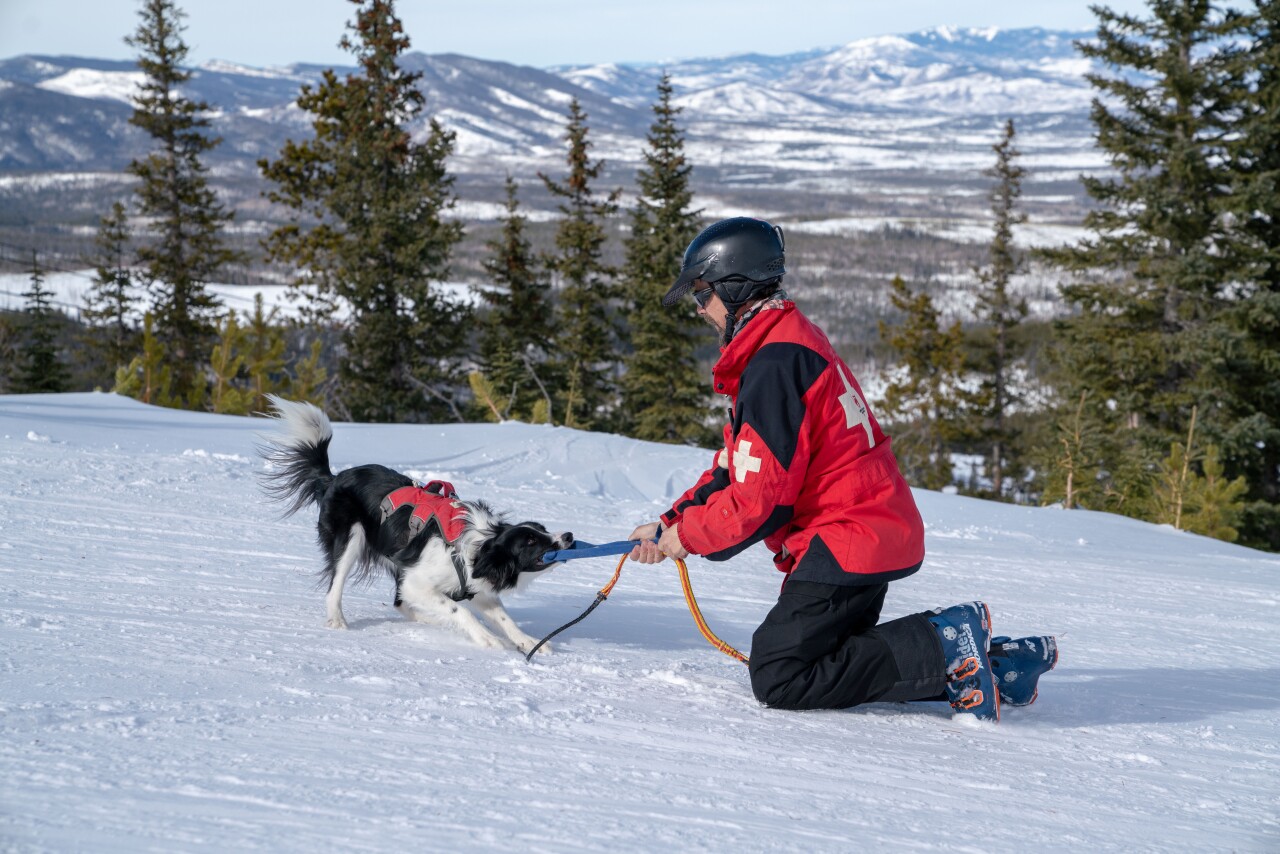
WPSPDT has been affiliated with C-RAD for about seven years.
"We feel honored to be an asset to the community," LaRocca said. "And we really, really take what we do seriously. We train to the highest level. We train weekly. And our values and our standards are all C-RAD-based. They've become the standard, the operating standard, for avalanche rescue dogs. We're honored to be part of their system."
As he spoke, Biskit sat patiently next to him. Then she started to squirm.
"Right now she's kind of telling me, 'Dad, we haven't done anything today. When are we going to see some action? When are we going to do something?'" LaRocca said.
That's because a normal day for Biskit does not involve a Zoom interview. After a morning meeting, the pair typically heads up the mountain, where they stay in a hut most of the day, ready to dispatch to any call for help from Jones Pass to Rocky Mountain National Park.
Obedience training is sprinkled through the day, plus some Frisbee as a reward. Frisbee is Biskit's favorite "tug toy," and her reward for a job well done, LaRocca explained.
When most visitors head inside around lunch hour, LaRocca and other patrollers sometimes take the quiet time on the mountain to mimic an avalanche rescue scenario.
"I'll grab two or three patrollers, we'll go out somewhere, we'll dig a hole, we'll actually put somebody in the snow, cover up that hole, disguise the surface of the snow so she can't tell where this person is," he said. "Take all the clues away, let that scent percolate through the snow. And we'll train her on finding somebody underneath the snow. Hopefully, we get a chance to do that at least once or twice a week — keep our skills as sharp as they can be."
At the end of the day, they head back downhill with Biskit either running alongside LaRocca, sitting behind him on a snowmobile, or in a toboggan.
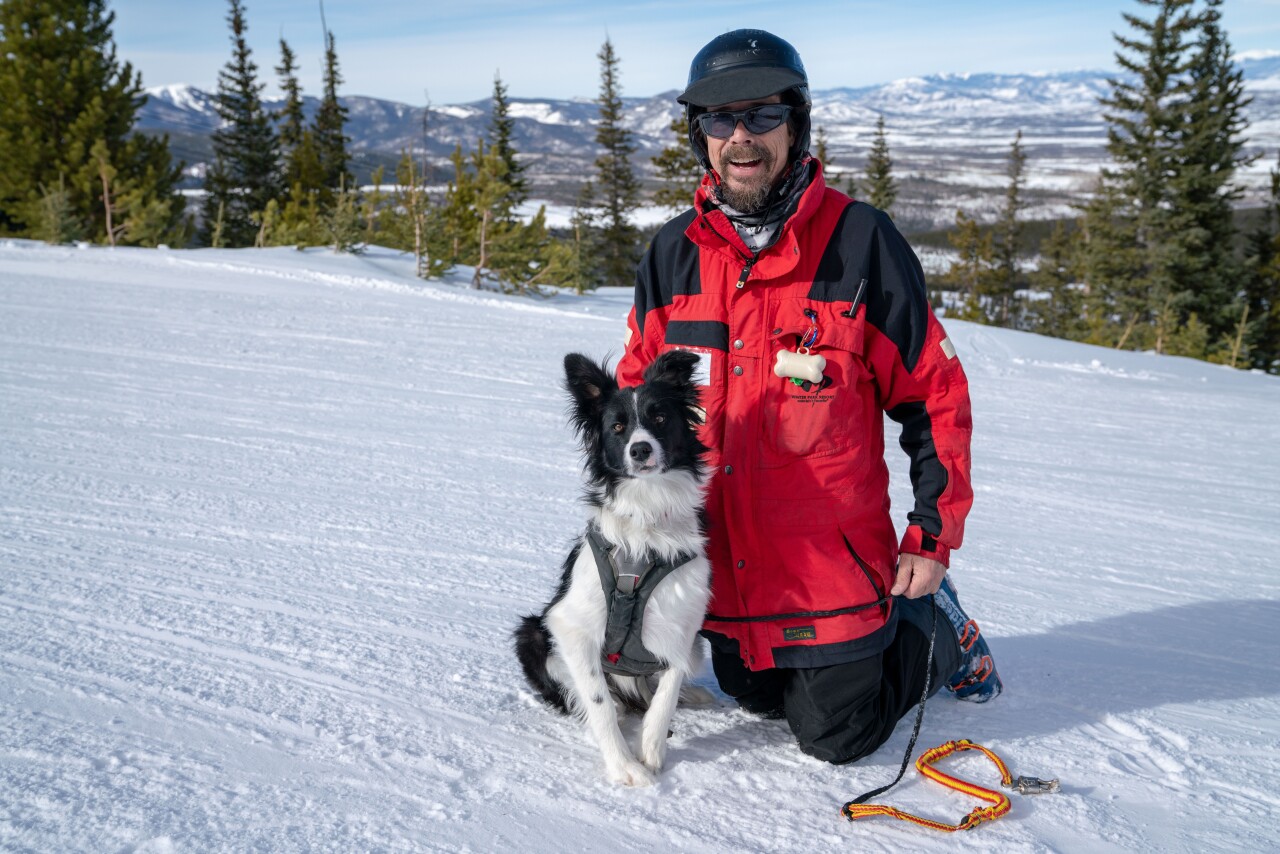
Part of her training includes what LaRocca jokingly calls "Planes, Trains and Automobiles" — she's now comfortable on a variety of different vehicles, including chair lifts, gondolas, snowcats, snowmobiles and the Flight for Life helicopter.
Even with years of experience under their belts, their training continues with C-RAD.
"It's amazing having a resource like C-RAD," LaRocca said. "Our team is indebted to them forever. We are so grateful to have them nearby and very active in our training."
Any extra trainings with C-RAD are typically on top of the handlers' and technicians' normal 40-hour workweeks.
"They're doing trainings and attending courses on their weekends," Lesch said. "For us, our model has been to subsidize as much of that as we can."
As a nonprofit, every dollar donated helps offset the training costs for the C-RAD teams. C-RAD's board helps by seeking partnerships and sponsorship donations, and the group also works with grant programs. This helps lower the cost of the courses, like the one in Winter Park, so teams are as prepared as possible for the next disaster.
"We can't do this, even at C-RAD, we can't do this without the support and help of our communities and people," Lesch said. "And then that kind of translates to how rescue operates."
"You know, a $20 donation helps us decrease the cost of training by 20 bucks," he continued.
Those funds then turn around to help in rescues and recoveries. You can learn more about supporting C-RAD here.
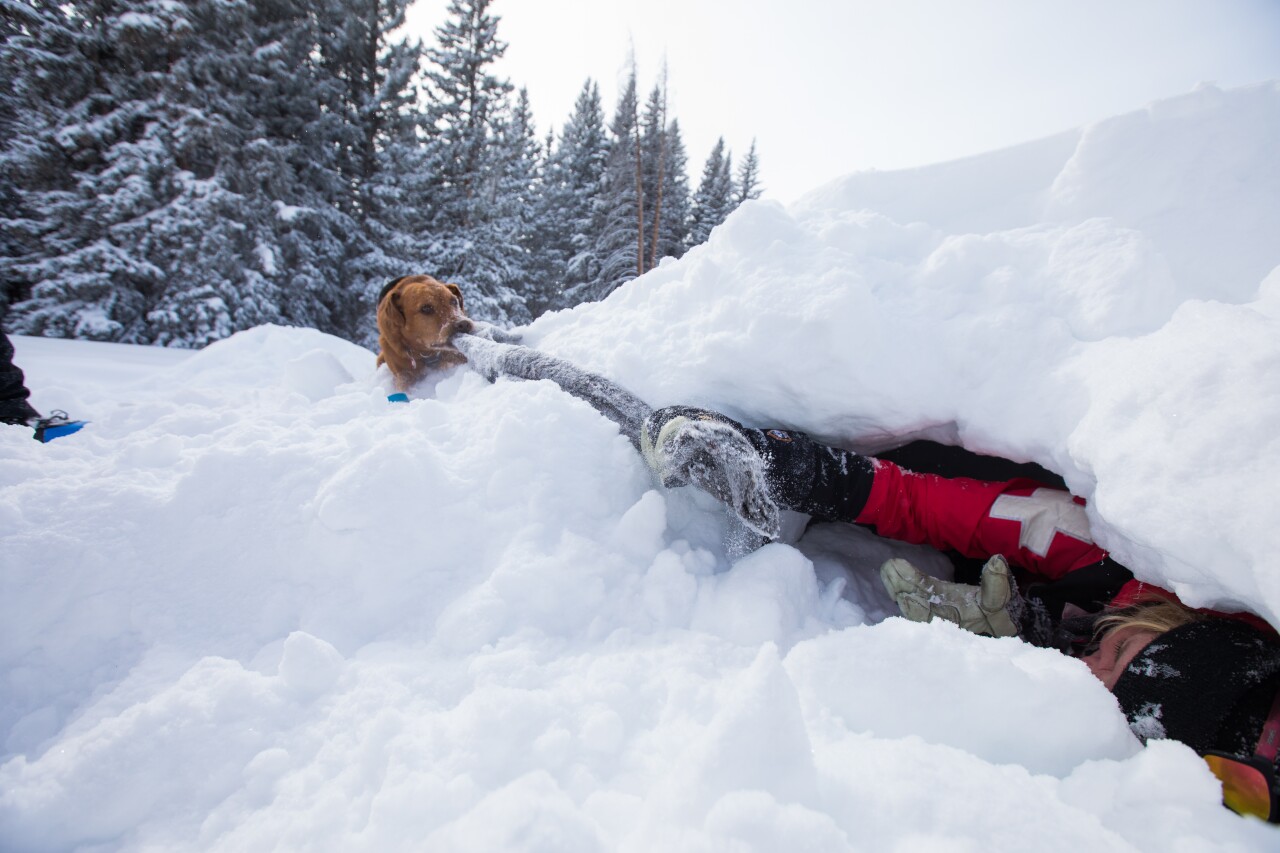
C-RAD work out in the field
Training with C-RAD is much more than a fun few days in the snow with a dog, but the members who are willing to go the distance with their four-legged coworkers keep Colorado's mountains that much safer.
This season, C-RAD members have deployed to four missions around the state, mostly in a volunteer capacity.
Lesch said earlier this year, he responded with his own dog to a double avalanche fatality near Hoosier Pass in Summit County. Another validated C-RAD team from Arapahoe Basin joined them, along with technicians who were also C-RAD members.
Then, in mid-March, two certified C-RAD teams from Loveland Ski Area and Copper Mountain responded to an avalanche at Loveland Pass to ensure nobody was buried in the snow.
Luckily, nobody was injured in that slide, which is pictured below.

On March 23, Winter Park Ski Patrol Dog Team members Brian Roman and his doberman, Emma, responded to an avalanche at Berthoud Pass. They are both accredited through C-RAD. Nobody was caught in that slide.
Last season, the team at Winter Park responded to two major incidents — a recovery search for a deceased solo skier in Grand County and a deceased snowmobiler in Jackson County.
"But to be able to see what all the people that were involved with that were able to do — in part because of the training opportunity that we've had with C-RAD and I think the changes that have been made in the rescue community to support us — we were able to bring closure to that pretty quickly," Lesch said. "And as much as we hope one of these days that our teams will have a live find, and we'll be able to bring somebody home alive for their family, there's a lot of power in being able to bring closure when there's uncertainty as to when it will come."
That power and training will continue for years to come to ensure C-RAD members are ready at a moment's notice to respond to an avalanche.
Hopefully the only time you'll see these very good dogs is from the chairlift line on some sunny afternoon, watching their waggy tails as they work on drills with their humans.
But if disaster strikes and you need them, C-RAD is ready.
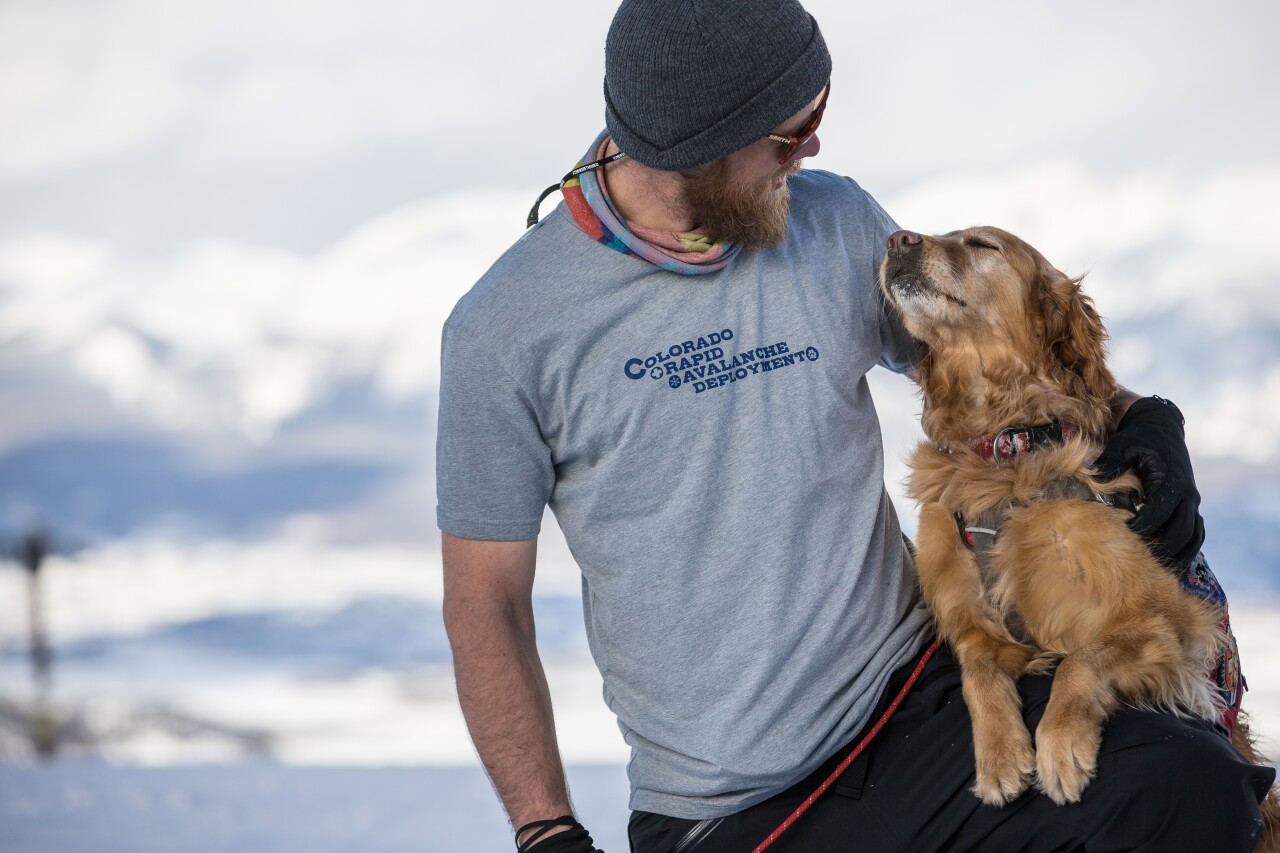
You can keep up with C-RAD on Facebook or Instagram. Always check the Colorado Avalanche Information Center's avalanche forecast before heading out into the backcountry in the wintry months. Both Lesch and LaRocca encourage adventurers to buy, test and regularly familiarize themselves with avalanche rescue equipment, like beacons, probes and shovels.




